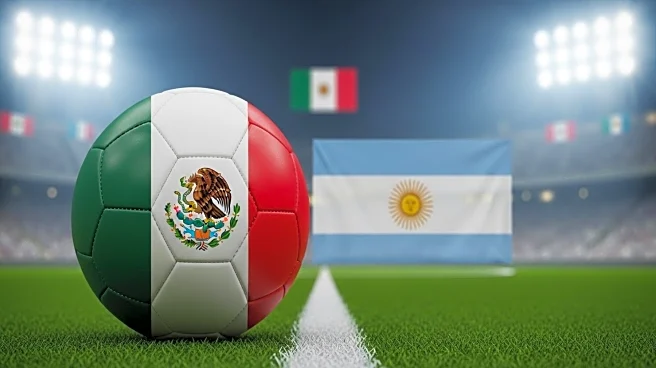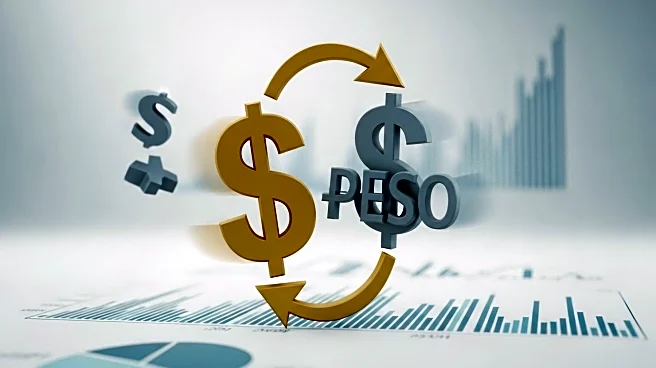What is the story about?
What's Happening?
The U.S. Treasury Department has extended a $20 billion currency swap line to Argentina's central bank to stabilize the country's financial situation. This intervention aims to prevent a financial crisis that could affect U.S. markets. The swap line exchanges stable U.S. dollars for volatile Argentine pesos, addressing liquidity concerns as Argentina faces key midterm elections. The move marks a significant U.S. intervention, reminiscent of the 1995 rescue of Mexico, and aims to halt negative economic feedback loops threatening Argentina's stability.
Why It's Important?
The bailout reflects the U.S.'s strategic interest in maintaining regional stability and preventing economic disruptions that could impact global markets. Argentina's financial instability poses risks of capital flight and market volatility, which could have broader implications for debt and commodity markets. The intervention underscores the interconnectedness of global economies and the importance of U.S. involvement in international financial stability. It also highlights the political stakes, as Argentina's government is a key ally for the U.S. in the region.
What's Next?
The upcoming elections in Argentina will be crucial in determining the country's political and economic trajectory. The U.S. will likely continue to monitor the situation closely, leveraging its political capital to ensure stability. The bailout may prompt further discussions on international financial cooperation and the role of major economies in supporting emerging markets. Investors will watch for Argentina's policy decisions post-election, which could influence the effectiveness of the U.S. intervention.
AI Generated Content
Do you find this article useful?














